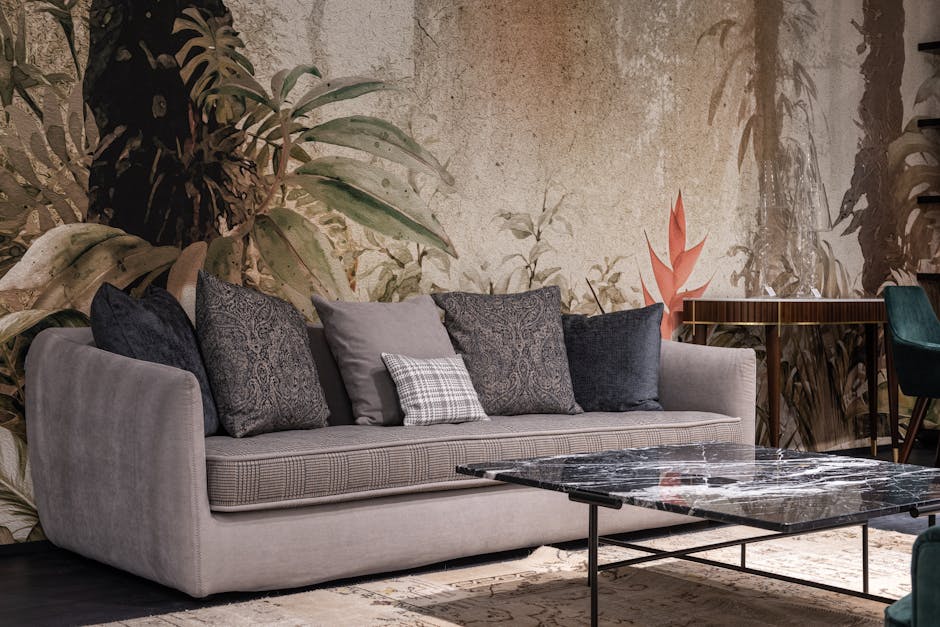
7 Tips to Choose Unique Sofas That Complement Your Living Space
Share
In the heart of every home, the living room offers a glimpse of the household’s character, and nothing says ‘unique personality’ quite like the perfect sofa. Discover how to select a unique sofa that makes a statement and complements your living space with effortless grace.
1. Understanding Your Space: Size and Shape Considerations
Before diving into the world of unique sofas, it’s crucial to grasp the dimensions and dynamics of your living area. A piece that’s too large can overwhelm the space, whereas one too small may seem lost. Consider the layout, ensuring there’s ample room for movement around the sofa. Measuring the room and existing furniture can provide a clearer idea of what size sofa will harmonize with your living space, ensuring it’s both a practical and a visually appealing addition.
Shape also plays a pivotal role in how a sofa defines your living space. For compact rooms, consider a sleek, straight-lined sofa that maximizes seating without dominating the floor area. In larger, open-plan spaces, a sectional can serve to delineate areas of use—providing a cozy nook for family gatherings while maintaining the room’s expansive feel.
2. Picking the Perfect Style to Match Your Decor
The style of your sofa should complement the overall aesthetic of your home. From mid-century modern to contemporary chic, the design possibilities are endless. Think about the mood you wish to create. A sofa with clean lines and minimal embellishment can enhance a more modern or minimalist decor, while a sofa with ornate details and plush fabrics speaks to a more traditional or luxurious setting. Don’t be afraid to mix styles for a more eclectic feel, but ensure the sofa acts as a cohesive element that ties your decor together.
3. Choosing the Right Material for Durability and Comfort
Material selection is key to ensuring your sofa withstands the test of time and use, especially in a bustling household. Leather offers durability and ages beautifully but requires regular maintenance. In contrast, microfiber is a great alternative for those seeking ease of cleaning and resilience against spills and stains. For a luxurious feel, velvet can be a striking choice, though it may demand more care. Consider your lifestyle and the level of maintenance you’re willing to commit to when deciding on the sofa material.
Furthermore, the internal build of the sofa affects both comfort and longevity. Look for a frame made from solid wood, and cushions filled with high-density foam to ensure it remains comfortable and retains its shape over time.
4. Color Schemes That Complement Your Living Space
Choosing the right color for your sofa is essential not only for ensuring it matches your decor but also for setting the room’s tone. Neutral colors offer flexibility, allowing you to change up accent colors with throws and pillows. However, opting for a bold or unexpected color can make a dramatic statement and become the focal point of your room. Consider the color psychology and how different hues can affect the mood of your living space. For instance, blues evoke calmness, while yellows bring a cheerful and vibrant energy.
5. Incorporating Unique Designs and Patterns
Don’t shy away from uniquely designed sofas or those with distinctive patterns; they can inject personality and flair into your living space. Whether it’s a quirky shape, a bold pattern, or an unexpected material mix, a unique sofa can serve as a piece of art in your home. Ensure the sofa’s design or pattern harmonizes with the room’s theme to avoid a disjointed aesthetic. For a balanced look, keep other furnishings more understated if your sofa is particularly bold or busy.
6. The Importance of Testing Comfort and Quality
While aesthetics are important, comfort should never be compromised. Spend time sitting on different sofas to test their comfort and support. Take note of the seat height and depth, back support, and the feel of the fabric against your skin. It’s also worth investigating the sofa’s construction—the frame, suspension, and cushion filling—as these elements significantly impact the quality and durability of the piece. A high-quality sofa should feel sturdy and comfortable, indicating it will hold up well over time.
7. Finding the Right Retailer and Securing a Good Deal
Finally, sourcing your sofa from a reputable retailer is crucial. Research online, read reviews, and ask for recommendations to find stores known for quality furniture and good customer service. Don’t hesitate to negotiate on price or inquire about upcoming sales and financing options. Remember, a great retailer should offer not just competitive pricing but also delivery, warranty, and aftercare services, ensuring your unique sofa remains in perfect condition for years to come.

